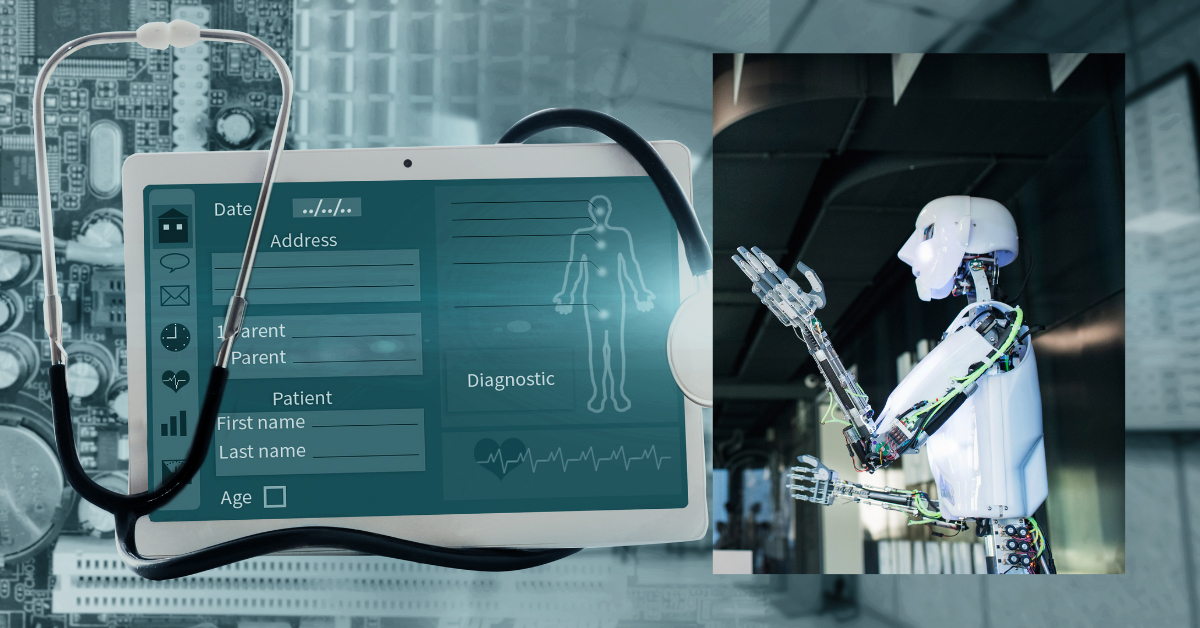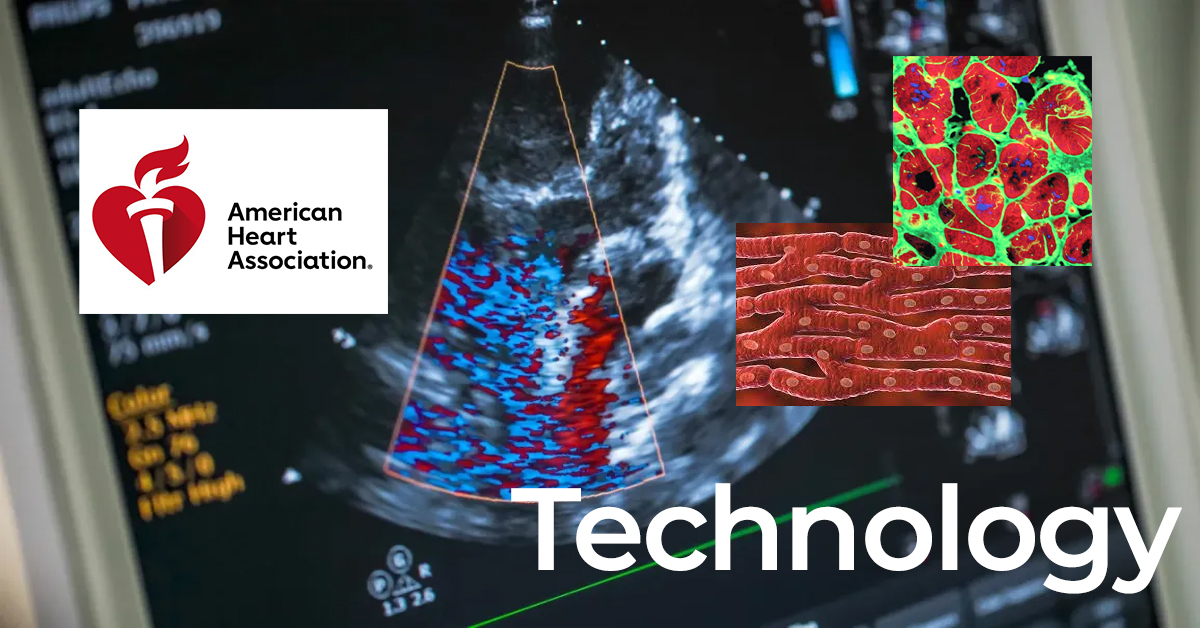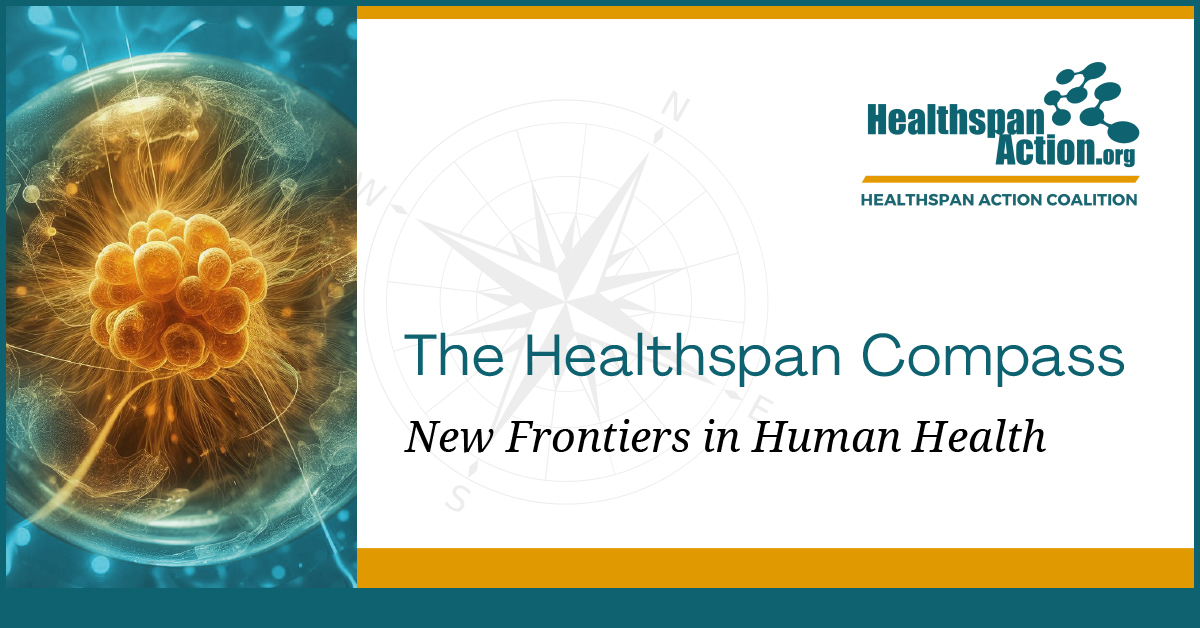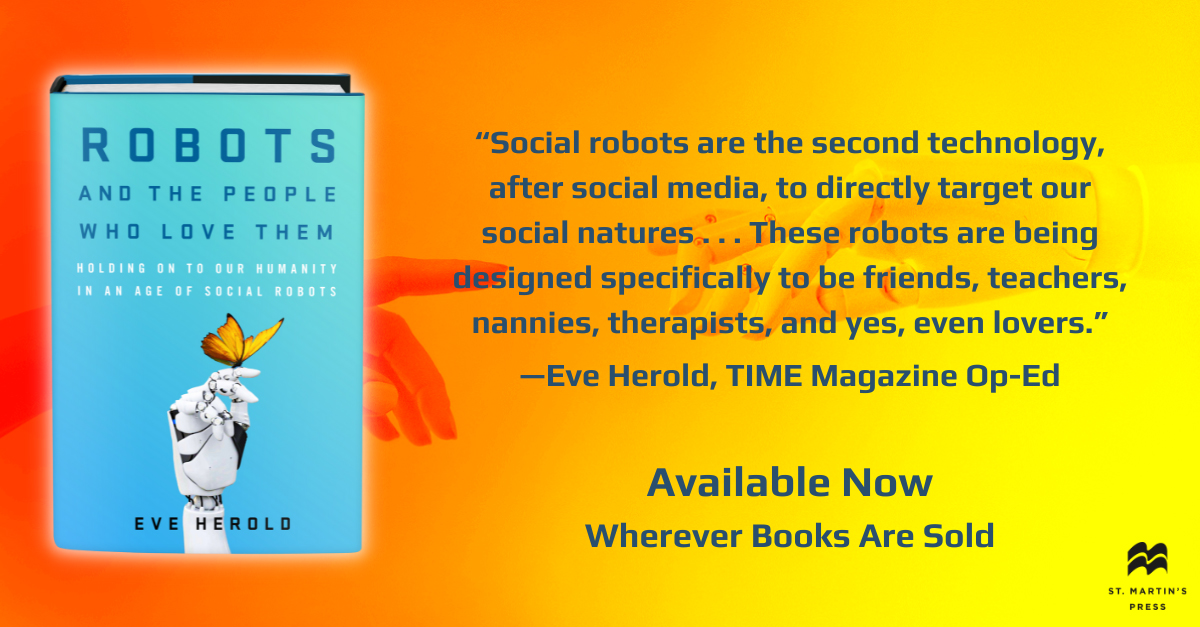From the Editor
Welcome to the January 2024 Healthspan Compass! This month’s focus will zero in on an under-covered topic: the transformative use of robots and AI in healthcare and extending the healthspan. Robots, many of them socially interactive, are already making inroads in surgery and patient care and enhancing the functionality of adults with disabilities. At the same time, AI is turbo-charging research and improving medical diagnosis. Read on for some highlights of how these technologies are poised to revolutionize health and medicine..
Learn about a new anti-aging initiative by skin care and cosmetics giant Estee Lauder, which hopes to truly deliver on its promises of reversing skin aging. As an added bonus, Healthspan Action Coalition’s Executive Director Bernard Siegel explains the healthspan ecosystem and how HSAC was born to Kyle Cetrulo, host of Dragon Longevity Podcast. Chase all that down with a story about why private equity firms are buying up medical practices and what this means for patients, physicians, and the whole healthcare delivery system.
The AI and Robotics Revolution in Healthcare
Healthcare 2.0 is upon us. The sector is likely to be one of the most important beneficiaries of emerging technology, with new applications of robotics and AI already weaving their way into the healthcare system and many more in development. It’s hard to overestimate the impact of this revolution on enhancing diagnosis and treatment, improving efficiencies in a traditionally uncoordinated delivery system, spawning a multitude of better health outcomes and extension of the human healthspan.

The Many Applications of Robots and AI in Healthcare
Hardly any area of medicine will remain untouched by the next wave of technologies sweeping the landscape, according to Claudine Denecke and Claude Baudoin. The two provide an excellent overview of how the entire health ecosystem will be transformed in Frontiers in Medicine. Robots can do everything from assisting with (or performing) surgeries and providing smart prosthetics and wearable exoskeletons for the rehabilitation of stroke patients and spinal cord injuries, to monitoring and caring for patients at home. And artificial intelligence programs can exceed the accuracy of physicians in diagnosis, monitoring patients and making sense of raw medical data. Importantly, it can coordinate and make sense of a deluge of data to predict outcomes and prescribe treatments. Not to mention that drug discovery and other processes are being turbo-charged by AI in the lab.
Baudoin and Denecke think that these technologies will answer the call for P5—predictive, personalized, preventive, participatory and precision medicine. As in a host of professions, robots and AI won’t eliminate the need for doctors and clinicians, but they can be valuable assistants and improve outcomes due to faster, more accurate diagnoses and taking prevention and treatment to the next level. All of this cannot fail to have a measurable effect on longevity and healthspan.
Health Tech at the CES
New consumer products related to health got a lot of buzz at January’s annual Consumer Electronics Show in Las Vegas, with companion robots stealing the show. The big trend in the age of AI is for individuals to track their own health data, and the CES did not disappoint. CBS news reported on devices to analyze breath and lung capacity, quickly and accurately diagnose Covid, improve sleep quality with a “smart bed,” monitor weight, Cardiac function and small nerve activity, and even a hip protection airbag that promises to prevent hip fractures among high-risk individuals. CNET profiled a plethora of products, including glasses that improve hearing, that are contributing to the consumer’s ability to actively monitor and support their health. These gadgets promise to advance at least two of the five Ps in medicine—participatory and preventive—healthcare.

Dr. AMIE Will See You Now
Mariana Lenharo reports in the January issue of Nature that an AI trained to do patient interviews and make diagnoses matched or exceeded the skills of primary-care doctors. The conversational large-language model, named AMIE, for “Articulate Medical Intelligence Explorer,” was more accurate than physicians in diagnosing respiratory and cardiovascular conditions, and according to study participants who interacted with it, even ranked higher than human doctors in empathy. Ouch.
The AI program, developed by Google, trained itself by running simulations based on limited real-life medical data and was programmed to play the part of an empathetic physician seeking a well-informed diagnosis based on a patient’s history and symptoms. The human subjects didn’t know whether they were speaking with one of 20 human doctors participating in the study or an AI. Lenharo reports that “The AI system outperformed physicians’ diagnostic accuracy in all six medical specialties considered. The bot outperformed physicians in 24 of 26 criteria for conversation quality, including politeness, explaining the condition and treatment, coming across as honest, and expressing care and commitment.” To be sure, participants may have felt differently if they knew all that concern was only algorithmic and that there was no actual human connection. AMIE so far is only experimental, and although it passed the driving test, so to speak, its true usefulness will only be revealed once it’s used in a large number of real-world scenarios.

Robots, AI and Cognitive Decline
One of the most perplexing issues related to lengthening life- and healthspans is the unsolved problem of cognitive decline in later life. As the worldwide population ages, an explosion in Alzheimer’s Disease and other forms of dementia is predicted to place a heavy medical and economic burden on families and nations. According to the Centers for Disease Control and Prevention, by 2060 there will be 14 million people living with Alzheimer’s Disease alone. Combine that with falling birth rates and fewer caregivers, and we have a potential calamity on our hands. However, those predictions are based on today’s reality of very few, limited treatments for dementia and assume that no new breakthroughs will occur to stem the tide.
But what if robots and AI could change this picture? There’s emerging evidence that they could help to delay and treat dementia, according to an international research team led by Sumayya Khalid and published in IEEE Access. Robots, some humanoid and some in animal form, are already being used in some nursing homes to serve, soothe and engage older people with dementia, with documented success. The robots increase social-emotional engagement, which is known to have a salutary effect on cognitive function, and decrease the anxiety and agitation seen in middle-stage Alzheimer’s. In general, these robots are not yet imbued with deep learning systems that can provide cognitive training, which has been shown stave off or delay mental decline. Combine AI-powered robots with the rapidly accelerated pace of scientific research thanks to AI, and our most dismal predictions may not come to pass.

The AMERICAN HEART ASSOCIATION is All In with Technology
This month the Journal of the American Heart Association debuted a special issue devoted to the results of its $14 million investment in research by the AHA’s Health Technologies and Innovation Research Network. Multidisciplinary teams at Stanford University, Johns Hopkins University, Boston University and others received grants in 2020 to focus on the study and development of digital technologies to improve heart and brain health, with impressive results. One product, developed by Johns Hopkins researchers, is the EyePhone, which diagnoses strokes by measuring rapid, uncontrollable eye movements, and another innovation is aimed at enrolling traditionally under-represented groups in clinical trials for heart failure treatments through a variety of virtual means. Other developments include the design of a smartphone-based cognitive assessment and the addition of machine learning technology in portable echocardiograms. While these technologies are currently in the testing stage, imagine if EMS workers had access to them in the field, where rapid and accurate diagnoses can be made wherever and whenever emergencies arise and minutes are precious. Faster, better diagnoses lead to better treatments, fewer complications, and better quality of life—all ingredients for an extended healthspan.

No More Freeze-Motion with Parkinson’s
One of the most distressing effects of Parkinson’s disease is falling due to the sudden stopping of one’s gait, or freezing, which often restricts patients to a motorized scooter or wheelchair to avoid the falls. This phenomenon has been treated with surgery, pharmaceuticals and behavioral therapy, with little result. Now, researchers at Harvard’s John A. Paulson School of Engineering and Boston University’s Sargent College of Health and Rehabilitation Science have developed a soft wearable robot that prevented freezing in a 73-year-old man with Parkinson’s.
The robotic garment resembles a fancy pair of suspenders with actuators and sensors worn around the waist and actuators around the hips and thighs that provide a gentle push to the hips in concert with the person’s leg swings. The patient who gave this garment a try usually had more than 10 incapacitating freezes per day, leading to frequent falls and confined him to a scooter outside the house. With the robot, the man’s freezing episodes were completely eliminated in the house and dramatically reduced outside, and he was able to walk and talk without freezing. He said, “It could help me walk longer and maintain the quality of my life.”
It’s not hard to see how the Parkinson’s wearable robot and similar innovations, the products of converging technologies and multidisciplinary approaches, can help older people and people with disabilities remain mobile and independent longer, with a better quality of life.

Regulating Digital Technologies in Healthcare
Regulation of AI and robotics in health is only beginning to take shape, but the FDA has recognized that this exploding field cries out for oversight. It recently launched a Digital Health Advisory Committee, which is in the process of recruiting members of diverse backgrounds to advise the organization on everything from AI and deep learning technologies to wearables that gather patient data. The issues that need to be addressed are numerous and complex. These include cybersecurity and patient privacy, safety of applications and even decentralized clinical trials made possible by technology. The committee, which is still being developed, is expected to become fully functional this year.
Video: Bernard Siegel Talks Inspiration and Evolution of the HSAC
Healthspan Action Coalition co-founder and Executive Director, Bernard Siegel, tells Kyle Cetrulo how this groundbreaking organization arose out of his more than 20 years of experience in creating societal movements to advance science, promote supportive policy and educate the public about regenerative medicine and now, healthspan.

Estee Lauder Gets Serious About Age Reversal
Skin care and cosmetics companies have been promising younger-looking skin for decades, but the skin care giant Estee Lauder is going for the gold: not just younger-looking skin, but skin that actually is younger. While the company has always been active in research to develop luxury skin care products, this month it launched its Skin Longevity Initiative. In partnership with the Stanford Center on Longevity and with the help of scientists drawn from storied institutions like the Buck Institute for Research on Aging, Weill Cornell Medicine and UC Berkeley, some serious longevity science is being devoted to the reversal of skin aging. Justin Boxford, Estee Lauder’s Global Brand President, said, “Longevity is one of the fastest growing movements in the beauty and wellness industries, with multi-generational consumer interest in biohacking and age-reversal practices at an all-time high. We see this a a truly pivotal moment for the brand to disrupt the industry, changing what we know about skin aging and reimagining skincare for the future.”
Estee lauder has based many of its products on the study of sirtuins, a signaling molecule thought to play a role in epigenetic aging. So far, the company has secured 29 patents based on its research and presented at more than 20 scientific meetings. The question arises of who will be able to afford new products developed with the help of the initiative. In the beginning, these formulations will likely be a bit too pricey for the average person, but consumers are demanding higher caliber age-reversal products, and where there’s scalable mass demand, affordable products tend to follow.

The Folly of Age Discrimination in the Workplace
Corporate America is just starting to acknowledge that age discrimination in the workplace is not only wrongheaded, it’s bad business and bad for the economy. Dan Pontefract, a leadership strategist, writes in Forbes that a fast-approaching “longevity economy” could unlock about five trillion dollars of economic potential if companies were to tap into the talents, skill and wisdom of older people. This is based on the findings of a McKinsey Health Institute analysis of the world’s business and economic landscape. MHI predicts that over the next decade, “humanity could add as many as 45 billion extra years of higher-quality life, roughly six years per person on average.”
With aging populations, falling birth rates and extended healthspans, the world economy can’t afford to keep ignoring older workers. Pontefract writes that “Integrating and leveraging the skills and wisdom of older workers is not just a social responsibility; it should become a strategic imperative for all organizations; an action essential for sustainable growth and innovation in the years to come.”

Private Equity Firms and the Cost of Healthcare
The U.S. has the most expensive healthcare in the world, but not the best health. It lags behind many other developed nations, which have universal healthcare, and the country ranks far below other industrialized nations in lifespan. This is not because the best cutting-edge medicine is not available, but because of systemic problems that make it unaffordable for millions of people. The buying up of medical practices by private equity firms bent on quick returns on investment is exacerbating the problem.
In an opinion piece for The Hill, Brown University professors Yashaswini Singh and Christopher Waley report that in the last decade, private equity firms, which buy, restructure and sell companies, have invested nearly a colossal $1 trillion in gobbling up medical practices. Since these firms expect lavish returns on their investments—often 20 percent or more in three to five years, this inevitably drives up the prices paid by patients, insurance companies and the government. Couple this with a decades-long trend of consolidation of health care systems, which have not been found to improve healthcare, and you have an unholy alliance that patients ultimately pay for. But why do so many physicians sell their practices to equity firms?
In fact, a Physicians Advocacy Institute study reveals that nearly 75 percent of doctors now work for a hospital or corporate owner rather than operate a private practice. Why, you might ask? The top reason, according to the American Medical Association, is that physicians’ reimbursement rates are often too low to keep a practice viable, and individual doctors just don’t have the negotiating clout to obtain better rates from insurers.
And then there’s the burnout problem. The AMA reported that in 2021, 63 percent of physicians showed symptoms of burnout. One of the causes of burnout likely stems from how Medicare relies on a fee-for-service reimbursement model that rewards quantity of patients seen on a daily basis over quality of results. This puts intense pressure on doctors to see as many patients as possible, whereas working for a hospital or corporation affords doctors a steady, reliable income with a better work-life balance.
But is this system, which locks millions of Americans out of having healthcare, really working? The longevity and healthspan sector, including the Healthspan Action Coalition, thinks we need to reorient a system that is too expensive and doesn’t work as well as it could for patients or physicians. Reframing our focus from treating illness after it develops to preventing illness and maintaining health and vitality are a good place to start. Then we need to take a hard look at how we can address the systemic problems to guarantee high-quality healthcare to all.



